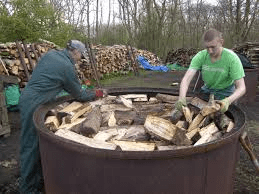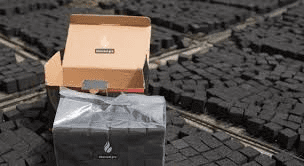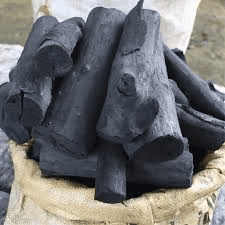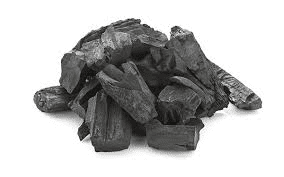Charcoal is a widely used product, known for its applications in cooking, heating, and industrial processes. It is made by burning wood or other organic materials in the absence of oxygen, which removes water, tar, and other volatile substances, leaving behind a solid, carbon-rich material.
Processing, packaging, and exporting charcoal involves several important steps to ensure that the final product meets quality standards and reaches international markets in good condition.
The first step in processing charcoal is production. Charcoal is typically produced in one of two ways: traditional kiln methods or modern retort systems. In traditional methods, wood is stacked in a kiln or pit and then slowly burned with limited oxygen.
This process can take several days, resulting in a batch of charcoal that may vary in size and quality. In modern retort systems, wood is heated in a closed environment where oxygen is controlled, leading to more consistent results. The choice of production method can affect the quality of the charcoal, including its size, density, and burn time.
After production, the charcoal needs to be cooled and processed. Cooling is done to bring the charcoal to a safe temperature for handling and packaging. This is usually done by allowing the charcoal to cool in the kiln or retort for several hours or overnight.
Once cooled, the charcoal is broken into smaller pieces if necessary. This step is important to ensure that the charcoal is the right size for its intended use, whether it’s for grilling, industrial applications, or other purposes. The broken pieces are then sorted to remove any dust, fines, or unusable fragments.
Packaging is a crucial step in the process to protect the charcoal during transport and storage. Charcoal is typically packaged in sturdy, moisture-resistant bags or boxes. The packaging should be designed to prevent moisture from entering, as moisture can cause the charcoal to degrade and become less effective. Bags are often made from strong paper or plastic materials and may include a liner to protect the charcoal.
Boxes are usually used for larger quantities and are made from durable cardboard. Each package is labeled with essential information, including the type of charcoal, weight, and any safety instructions.
Exporting charcoal involves ensuring that the product meets international standards and regulations. This includes obtaining the necessary export documentation, such as certificates of origin, quality certificates, and any specific certifications required by the importing country.
It is also important to comply with international regulations regarding packaging and labeling. Proper documentation helps to facilitate smooth customs clearance and avoids delays or complications.
Transportation is another critical aspect of exporting charcoal. Charcoal is usually transported by sea or land, depending on the destination and the quantity being shipped. During transportation, the charcoal must be kept dry and protected from extreme temperatures to prevent damage.
In many cases, the charcoal is shipped in containers that are designed to withstand various environmental conditions. Proper handling and loading of the containers are essential to prevent breakage and ensure that the charcoal arrives at its destination in good condition.
Upon arrival at the destination port, the charcoal must go through customs clearance. This involves checking the documentation and inspecting the shipment to ensure it meets the importing country’s standards. Customs authorities may examine the charcoal for quality and safety compliance.
Once cleared, the charcoal can be distributed to retailers, wholesalers, or directly to consumers. It is important to maintain good records and communication throughout this process to ensure that the product reaches its final destination efficiently.
Processing, packaging, and exporting charcoal involves a series of steps designed to maintain the quality and safety of the product. From production and cooling to packaging and transport, each stage requires careful management to meet international standards and ensure customer satisfaction.
By following best practices and adhering to regulations, producers and exporters can successfully bring charcoal to global markets, meeting the demands of various industries and consumers.
How to Process Charcoal for Exportation

1. Selecting Raw Materials: Choose suitable raw materials, such as wood, coconut shells, or bamboo. The type of material affects the quality and characteristics of the charcoal. Ensure the raw materials are dry and free from contaminants.
2. Carbonization: Carbonize the raw materials to produce charcoal. This involves heating the materials in a low-oxygen environment to remove moisture and volatile compounds. Methods include traditional kiln burning or modern retort kilns.
3. Cooling: After carbonization, cool the charcoal in a controlled environment. Rapid cooling can cause the charcoal to crack, affecting its quality. Use methods like covering the charcoal with sand or letting it cool slowly in the kiln.
4. Crushing and Screening: Crush the cooled charcoal into smaller pieces and screen it to separate different sizes. This step ensures uniformity in the final product and helps in packaging. Use a hammer mill or similar equipment for crushing.
5. Drying: If necessary, further dry the charcoal to reduce moisture content. Charcoal with high moisture levels can be less efficient and more prone to mold. Use drying equipment or natural air drying depending on your setup.
6. Quality Control: Test the charcoal for quality parameters such as ash content, calorific value, and physical integrity. Ensure the charcoal meets the required standards and specifications for export.
7. Packaging Preparation: Prepare the charcoal for packaging by ensuring it is clean and free from dust or debris. Use appropriate handling techniques to avoid damage to the charcoal during this stage.
8. Packaging: Package the charcoal in sturdy, moisture-resistant bags or containers. Common options include woven polypropylene bags or plastic containers. Ensure the packaging is strong enough to withstand transportation.
9. Labeling: Label each package with essential information, including the type of charcoal, weight, batch number, and any relevant safety instructions. Accurate labeling helps in customs clearance and provides crucial information to buyers.
10. Documentation: Prepare all necessary documentation for export, including certificates of origin, quality certificates, and any required health certifications. Ensure that all paperwork is complete and accurate to avoid delays.
Read Also: 17 Medicinal Health Benefits Of Strobilanthes callosa (Neelakurinji)
How to Package Charcoal for Exportation

1. Choosing Packaging Materials: Select strong, moisture-resistant packaging materials to protect the charcoal during transport. Options include woven polypropylene bags, plastic containers, or cardboard boxes lined with plastic.
2. Bagging Charcoal: For bagged charcoal, use woven polypropylene or similar durable materials. Ensure the bags are of high quality to prevent tearing and leakage. Seal the bags securely to maintain product integrity.
3. Containerizing: For larger quantities, use plastic containers or barrels. These containers should be airtight and protect the charcoal from moisture and contaminants. Ensure containers are clean and dry before filling.
4. Ensuring Proper Weight Distribution: Distribute the charcoal evenly in each package to prevent uneven weight distribution. This helps in maintaining balance and prevents damage during handling and transport.
5. Sealing and Closing: Seal bags or containers tightly to prevent moisture ingress and spillage. Use heat sealing for plastic bags or secure lids for containers to ensure they remain intact during transit.
6. Labeling Packages: Clearly label each package with necessary details, including the type of charcoal, weight, and any handling instructions. Proper labeling is crucial for customs and customer information.
7. Storing Before Shipping: Store the packaged charcoal in a clean, dry area before shipping. Ensure the storage environment is free from moisture and extreme temperatures to maintain product quality.
8. Palletizing: For bulk shipments, arrange the packages on pallets to facilitate handling and transportation. Secure the packages with stretch wrap or strapping to prevent movement and damage.
9. Inspection: Conduct a final inspection of the packaged charcoal to ensure that all packaging, labeling, and documentation are correct. Address any issues before shipping to avoid problems during export.
10. Compliance: Ensure that the packaging meets any specific requirements for your target export market. Compliance with local and international standards helps in smooth customs clearance and delivery.
How to Export Charcoal for Profits
1. Market Research: Research potential markets to understand demand, pricing, and competition. Identify regions with high demand for charcoal and favorable trade conditions to maximize profit.
2. Pricing Strategy: Develop a competitive pricing strategy that covers production costs, packaging, and shipping while ensuring a profit margin. Consider factors like market prices, shipping costs, and customer preferences.
3. Compliance with Regulations: Ensure compliance with international trade regulations, including environmental and safety standards. Obtain necessary certifications and approvals required for exporting charcoal.
4. Finding Buyers: Locate potential buyers through trade shows, online marketplaces, and industry networks. Build relationships with importers, distributors, and retailers who are interested in your product.
5. Negotiating Contracts: Negotiate clear contracts with buyers that outline terms of sale, payment terms, delivery schedules, and responsibilities. Well-defined contracts help avoid disputes and ensure smooth transactions.
6. Logistics Management: Plan the logistics for shipping, including selecting reliable freight forwarders and managing export documentation. Efficient logistics are crucial for timely delivery and cost control.
7. Marketing and Promotion: Promote your charcoal through various channels, including online advertising, social media, and industry events. Highlight the quality and unique features of your charcoal to attract buyers.
8. Quality Assurance: Implement quality control measures throughout the production, packaging, and shipping processes. Consistent quality builds trust with buyers and encourages repeat business.
9. Customer Service: Provide excellent customer service to address any issues or inquiries from buyers. Good customer service helps build strong relationships and can lead to repeat orders and referrals.
10. Monitoring and Adapting: Continuously monitor market trends, customer feedback, and sales performance. Be prepared to adapt your strategies based on market conditions and customer preferences to optimize profitability.
Read Also: 18 Medicinal Health Benefits Of Zanthoxylum piperitum (Japanese Pepper)
Frequently Asked Questions (FAQ’s) About Charcoal

1. What is charcoal?
Charcoal is a black, porous material made by heating organic material, like wood, in the absence of oxygen. It is used for various applications, including cooking, heating, and industrial processes.
2. How is charcoal produced?
Charcoal is produced through a process called carbonization, where organic material is heated in a low-oxygen environment to remove moisture and volatile compounds, leaving behind the carbon-rich material.
3. What are the main types of charcoal?
The main types of charcoal include lump charcoal, which consists of large pieces of carbonized wood, and briquettes, which are made from powdered charcoal mixed with binders and additives.
4. How should charcoal be packaged for export?
Charcoal should be packaged in strong, moisture-resistant materials such as woven polypropylene bags or plastic containers. Ensure the packaging is sealed tightly to prevent damage and contamination.
5. What are the key quality factors for charcoal?
Key quality factors include the charcoal’s calorific value, ash content, and physical integrity. High-quality charcoal should have a high energy content, low ash residue, and be free from contaminants.
6. What certifications are required for exporting charcoal?
Certifications may include quality certifications, environmental certifications, and any specific requirements of the importing country. Check with relevant authorities and buyers for necessary certifications.
7. How can I find buyers for charcoal?
Find buyers through trade shows, online marketplaces, and industry networks. Build relationships with importers, distributors, and retailers who have a demand for charcoal.
8. What are the best practices for shipping charcoal?
Best practices include using protective packaging, maintaining proper weight distribution, and ensuring accurate export documentation. Efficient logistics and compliance with regulations are also important.
9. How do I develop a competitive pricing strategy for charcoal?
Develop a pricing strategy by considering production costs, packaging, shipping, and market demand. Research competitor prices and market conditions to set a price that ensures profitability.
10. How can I ensure consistent quality in charcoal production?
Implement quality control measures throughout the production process, including testing for key parameters and maintaining strict standards. Consistency in production practices helps ensure high-quality charcoal.
Read Also: Practical Steps to Convert Paper Wastes Into New Paper Products

